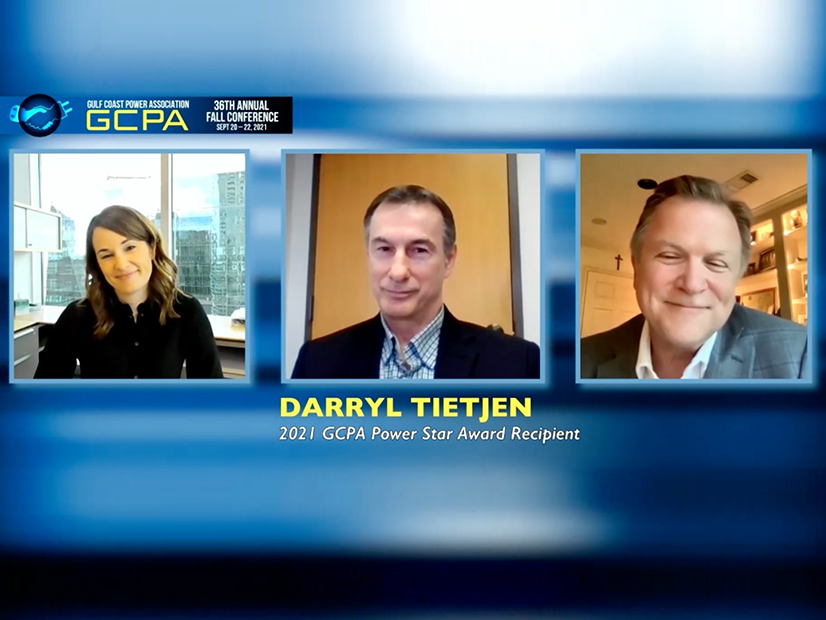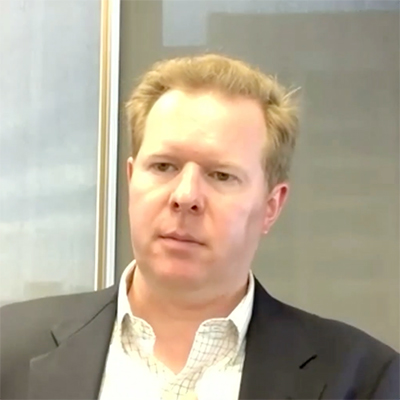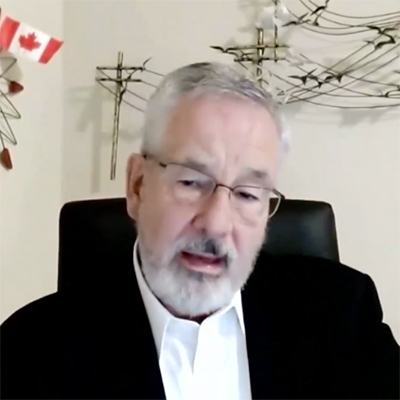
PUC’s Lake, ERCOT’s Jones Focused on More Reliable Grid
The Gulf Coast Power Association had hoped to resume in-person meetings with its annual Fall Conference last week, but it was forced to return to a virtual format with COVID-19’s re-emergence in Texas.

“We’re starting with a blank sheet of paper,” Lake said, alluding to the PUC’s work to redesign the ERCOT market after it came within minutes of total collapse during February’s devastating winter storm.
Andrew Barlow, the commission’s director of external affairs, noted to Lake that the market is like an airplane sitting on the runway while being built. Lake promptly corrected him.

During his keynote, Jones said he was asked to bring trust back to ERCOT when he accepted the temporary leadership position after his predecessor was fired.
“No one in the world does wholesale competition and retail competition like we have in Texas,” he said. “The event in February greatly tarnished our reputation, not to mention the horrific impacts on the many people in the state of Texas.”
Jones said ERCOT needs to “swing the pendulum” back to reliability, which he said has been overshadowed by an emphasis on affordable and clean energy.
“Our focus is on making improvements throughout the market,” he said. “The fact we are carrying the majority of the blame for the event is not a place we’re going to dwell upon. We’re going to dwell upon how to we fix this going forward.”
Texas Digs Bitcoin Miners
Bitcoin entrepreneurs, drawn by Texas’ low energy prices and business-friendly environment, are flocking to the Lone Star State. The state’s political leaders have welcomed the bitcoin miners, recognizing blockchain and cryptocurrency in its commercial law this summer.
Bitcoins are a digital currency that only exist and are exchanged online. Bitcoin “mining,” which uses complex calculations to verify transactions, is energy-intensive. It consumes more than 121 TWh/year, according to Cambridge University. The ERCOT market designates theses loads as “controllable load resources.”
“I can’t wait until they arrive,” said Jones, who recently visited a 300-MW facility east of Austin. “What cryptocurrency does for us, or any data center, is allow those loads to participate in the market. They’re able to come off the grid quickly, making them a fantastic load for us to serve because it brings up the valleys of our loads while not increasing our peaks at all.”
Recently, technology firm Lancium broke ground on a bitcoin mining facility near Fort Stockton in West Texas, the first of what it says will be several “clean campuses.” The facility is expected to reach its full capacity of 325 MW by the end of 2022.
Compute North is already operating a mining operation a couple of hours away in Big Spring.
“We think there’s a bigger opportunity that these controllable loads can have a number of applications at one location, but also be flexible at times,” Lancium CEO Michael McNamara said. “I’m not an expert on transmission design, but by moving these loads, we are effectively exporting energy by converting it into a product.”
Renewables Still Viable
Several panelists said the outspoken preference by regulators and legislators for dispatchable or conventional generation over intermittent renewable resources does not mean Texas’ bounty of wind and solar resources will soon be diminished. The renewable developers are still interested in the state — interested, but cautious.
“February threw everyone for a loop in how to invest,” EIG Global Energy Partners’ Shalin Parikh said. “We are seeing a more measured approach to financing of these projects over the last six to eight months. Developers may still see value in renewable projects in ERCOT, but until the market broadly has a better handle on how these hedged contracts are structured going forward against risk, I think we’ll see a little bit of wait-and-see approach.”

Energy consultant Alison Silverstein, referred to as “The Oracle” by her panel’s moderator, said it might be time for the decision-makers to take alternatives to thermal generation more seriously.
“If there’s anything I’d like to change, it’s attitudes,” she said. “Doing it the way traditional generation has always done it has not been super successful for ERCOT. We’re getting way too many close calls. It’s time, when you’re in a deep hole, to stop digging and try other tools. Let’s look for and exploit every resource.”
Industry Leaders Honored
The GCPA honored the industry’s seasoned veterans and its up-and-coming professionals with a pair of its annual awards.
Darryl Tietjen, who leads the PUC’s Rate Regulation Division, was presented — albeit virtually — with the Pat Wood Power Star Award by its namesake. During his 30 years at the commission, Tietjen has worked on numerous projects and cases involving the transition to a competitive electricity market and filed recommendations on every securitization issue related to the PUC’s financing orders.
“Darryl is viewed by so many as the steady hand and wise oracle for energy policy in our state,” said Wood, who chaired both the PUC and FERC, calling Tietjen an “indispensable part” of ERCOT’s transition to a competitive market. “He knows the first name of the commission is ‘public.’ He understands healthy competition and balanced regulation. He’s one hell of a fun guy to be around, and he has been since I’ve ever known him.”
“I’ve always marveled at the caliber of people in this industry,” Tietjen said. “I’ve had the great fortune to work for and with a stellar set of commissioners, stakeholder groups and folks throughout the industry. That’s one of the reasons I’ve been able to hang around so long. I’m going to embark on a very complex and deep analysis of whether it is feasible for me to work another 30 years, or maybe 40 years.”
ExxonMobil’s (NYSE:XOM) Alexandra Williams was awarded the organization’s emPOWERing Young Professionals Award, presented to an individual younger than 40 who has achieved excellence in the industry, made unique contributions to the market’s success, and served as a role model and leader. Williams was ill and unable to call in.
NERC’s Lauby Sees 3D Transition

NERC’s “focus is always on whether we can operate the grid reliably. Will the grid be resilient? Will we be able to respond to events on the grid and restore it?” Lauby said.
He said among the questions that need to be addressed in ensuring a resilient and reliable system is from where the balancing resources will come.
“We have wind and solar, but they’re variable. Right now the transition is being sorted by natural gas,” Lauby said. “Until we get small modular nuclear units and hydrogen [resources], we need to get to that bridge and know how far that bridge is going to be. We’re ending up with a resource mix that is more sensitive to extreme weather.
“We will need to look at other ways to make up for that uncertainty that comes with variable generation,” he said. “The metamorphosis of the bulk power system requires [the ability] to quantify these emerging issues.”


